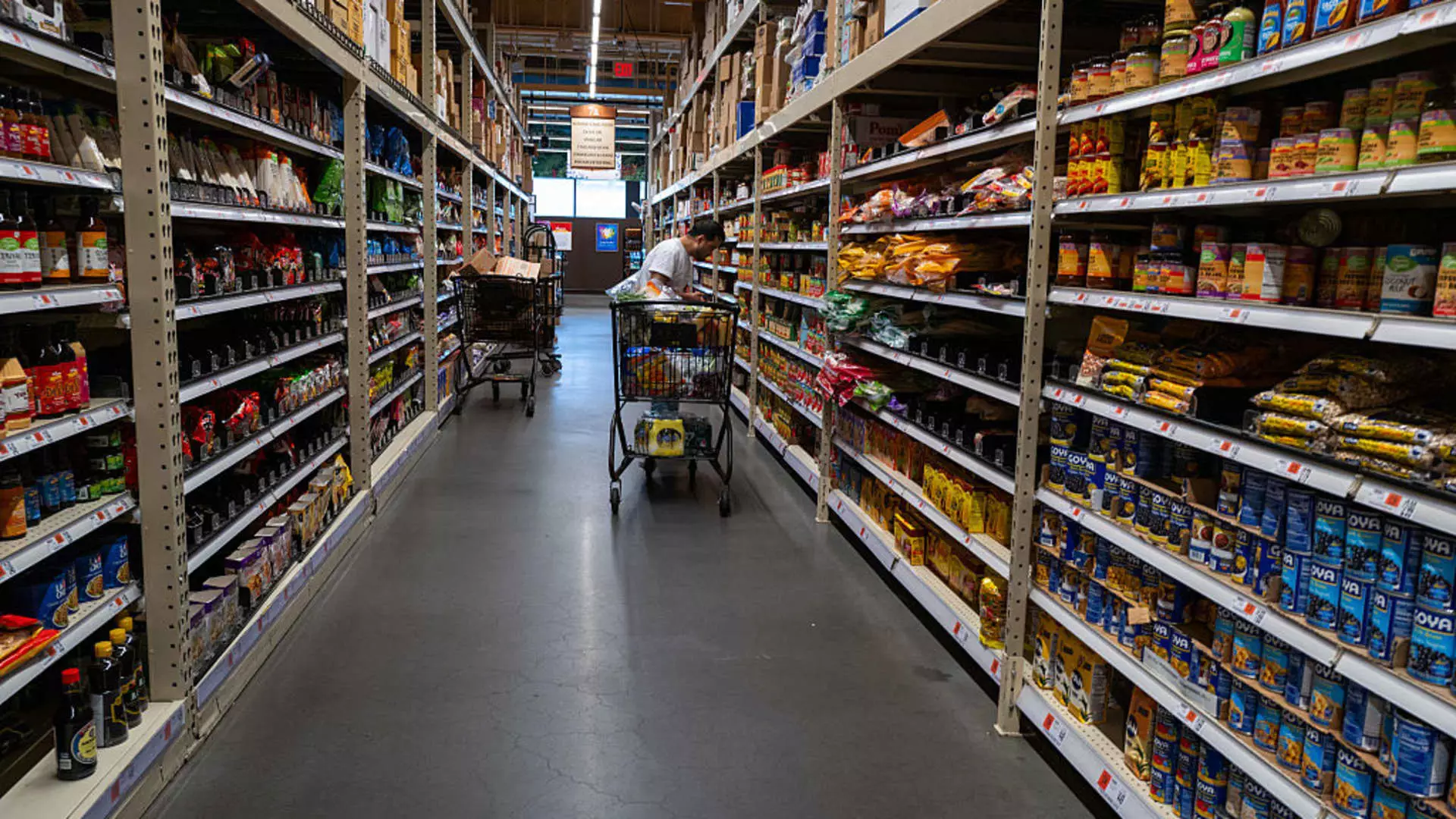In light of ongoing economic fluctuations, the latest reports from the Commerce Department paint a troubling yet expected picture: inflation barely budged in April. The personal consumption expenditures (PCE) price index—the Federal Reserve’s primary measure of inflation—increased a mere 0.1% for the month, bringing the annual inflation rate to 2.1%. This stagnation isn’t merely a statistic; it signifies broader consumer unease amid an economic landscape riddled with uncertainty. That this slow uptick aligns with forecasts offers little solace when examining the underlying factors dictated largely by political decisions and consumer sentiment.
Indeed, it becomes essential to dissect the components that contributed to this inflation figure. The core reading, which excludes volatile food and energy prices and garners heightened attention from policymakers, similarly showcased tepid growth with a mere increase of 0.1%, resulting in a core inflation rate of 2.5%. On the surface, these numbers might indicate stability; however, when combined with a notable slowdown in consumer spending—only a 0.2% increase compared to the more robust 0.7% in March—it is clear that caution prevails among consumers. With the personal savings rate witnessing a significant leap to 4.9%, consumers are tightening their wallets, possibly anticipating difficult times ahead.
The Impact of Tariffs and Trade Policy
The elephant in the room remains President Trump’s imposition of tariffs—a move touted as a means to rectify trade imbalances but one that is casting a long shadow over economic stability. The administration’s across-the-board 10% duties on all U.S. imports, coupled with more selective tariffs, are not just an isolated economic maneuver; they represent a substantial shift in the United States’ approach to global trade. While the intention may have been to resolve a staggering $140.5 billion deficit, these tariffs could serve as a double-edged sword, potentially ushering in a new era of price increases that evoke fear of stagflation.
Compounding this uncertainty is an international court ruling that struck down the tariffs, labeling them as beyond presidential authority. Yet, the complexity doesn’t end there, as an appeals court has granted the White House a temporary stay on this ruling. In this atmosphere of discord, it’s crucial to understand that the fallout from these tariffs is not just economic; it extends into the realm of labor markets and consumer confidence. History reminds us that while the immediate impact of tariffs can appear minimal, the long-term implications—especially if the public perception shifts towards expecting higher prices—can be profound and destabilizing.
Monetary Policy at the Crossroads
As the specter of inflation looms, pressures mount on the Federal Reserve to respond. Trump’s repeated calls for a reduction in interest rates reflect an administration increasingly eager to spur growth. However, the Fed’s reluctance to comply highlights a crucial tension between political motives and economic wisdom. Fed Chair Jerome Powell’s insistence on a apolitical approach to policy-making can feel almost Herculean in the face of such heavy-handed executive pressure. The implications of mismanagement in this arena could resonate throughout the economy, affecting borrowing rates, investment decisions, and ultimately the average consumer’s financial well-being.
Despite the recent inflation rates indicating a conservative approach toward economic growth, an undercurrent of anxiety lingers. The Fed’s apprehension regarding the potential inflationary impact of tariffs is not unfounded, particularly when set against a backdrop of rising labor market woes. The risk is clear: a combination of higher prices and subdued economic growth could pave the way for stagflation—a phenomenon hauntingly reminiscent of the early 1980s and one that our economy, despite its resilience, is ill-prepared to navigate again.
As we bear witness to this unfolding economic drama, it becomes increasingly evident that the choices made today will define the trajectory of our economy for years to come. The complexity of the situation demands that we remain vigilant and proactive, lest we allow political maneuvering to sabotage the foundation of our economic stability.


Leave a Reply